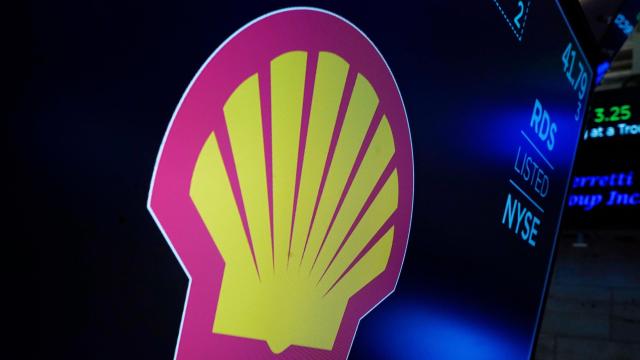Oil companies love to tell the world about the super cool technologies that have that will allow us to keep burning fossil fuels without cooking the climate. But those technologies are largely bullshit.
A new report from Global Witness documents how a much-hyped blue hydrogen plant with carbon capture and storage (CCS) owned by Shell is only capturing a fraction of the greenhouse gas emissions that the company claims. In fact, it’s created more emissions in its five years of operation than it’s captured.
The Quest plant, which is located near Edmonton, Alberta, is a facility designed to create blue hydrogen — a much-hyped new kind of fuel — from natural gas, with an accompanying CCS mechanism to store carbon emissions from the process underground. Shell has said that the Quest plant, which started operating in late 2015, has stopped more than 5 million tonnes of carbon dioxide — ”more CO2 than expected,” Shell’s website claims — from entering the atmosphere.
The company is required to report how well its CCS facility is performing to the Canadian government. And the figures tell a slightly less rose-coloured story than the one that Shell is telling the public. The figures show that about 80% of emissions from the process it uses to create the blue hydrogen are being captured. However, these emissions only account for 60% of the plant’s actual emissions. Other carbon emissions from the plant, Global Witness found, come from a waste stream that’s a byproduct of this process — and which Shell is not required to report. That means that the CCS portion of the facility only captures 80% of 60% of the plant’s emissions — maths that works out to just under 50% of Quest’s overall emissions.
“We do think Shell is misleading the public in that sense and only giving us one side of the story,” report author Dominic Eagleton told Vice.
There are also portions of the CCS equation behind the Quest plant that Shell does not publicise, the Global Witness report claims, which makes its footprint even dirtier. CCS systems are notoriously energy-intensive, and the energy the Quest system expends in the process of capturing and storing the emissions isn’t included in the figures Shell reports to the government. The methane emissions from the supply chain of natural gas — the primary ingredient in blue hydrogen — are also a big problem, and are similarly not included in Shell’s 80% figure.
With these two additional inputs calculated, Global Witness estimated that from its opening through 2019, the Quest plant has emitted more than 7.5 million tonnes of greenhouse gases into the atmosphere, some 2.5 million tonnes more than Shell says it has captured. In other words, only 39% of the overall yearly emissions associated with the Quest plant’s entire life cycle are actually captured. (A Shell spokesperson told Vice that the Quest plant “has met or exceeded our expectations” with regards to carbon capture, but didn’t comment directly on Global Witness’s 7.5 million tonnes figure.)
The Quest plant, which was built and opened with a lot of fanfare, was meant to be a test case for both blue hydrogen and CCS technologies; the plant cost $US1 ($1.39) billion to build, with more than $US650 ($902) million of that money coming from Canadian government subsidies. Shell, for its part, has been spinning the plant as a success.
“Widespread adoption of carbon capture and storage is one of the key solutions the world needs right now to help solve the climate challenge,” Michael Crothers, the president of Shell Canada, said in a statement after the plant reached the 5 million tonnes mark in 2020. “In its fifth year operating, Quest continues to be a thriving example of how carbon capture and storage is working; showing it can make a significant contribution to lowering CO2 emissions and at a lower cost than anticipated.”
But the maths in this report is the latest damning example of the reality of actual emissions when compared to overhyped, early-stage technology. A study released last summer found that blue hydrogen actually has a larger greenhouse gas footprint than natural gas, thanks in large part to the methane emissions created in the production and transport of the gas to make the hydrogen. CCS, which has become a key lynchpin of many oil and gas companies’ climate policies and promises, has also consistently proven to be an unreliable technology. In November, Chevron agreed to pay up around $US140 ($194) million in carbon offsets after its CCS plant in Australia failed to meet its targets for capturing at least 80% of its emissions.
“Shell has described the carbon capture facility at its Alberta plant as showing that carbon capture technology is an effective way of reducing carbon emissions, whereas our investigation shows that’s clearly not the case,” Eagleton told Vice. “This should be a wake-up call for governments, not just in Canada, but across the world.”
Editor’s Note: Release dates within this article are based in the U.S., but will be updated with local Australian dates as soon as we know more.
